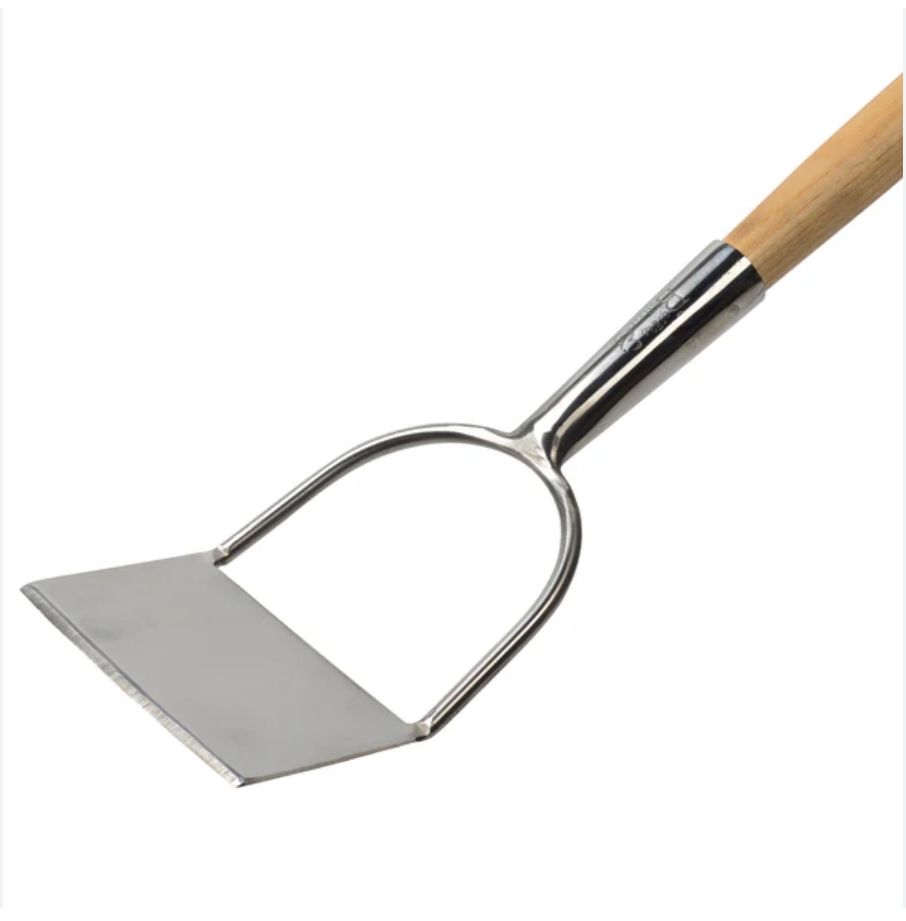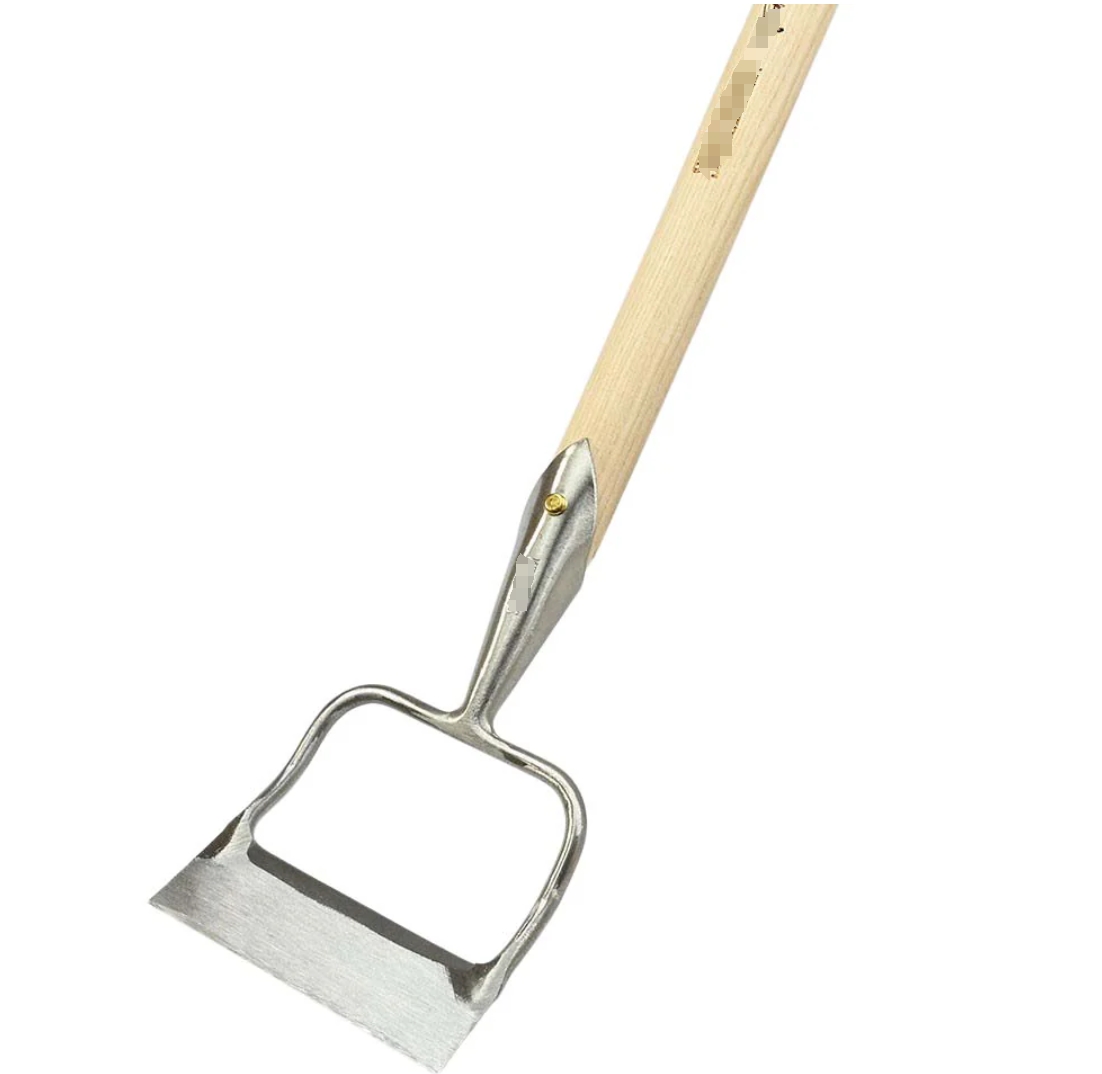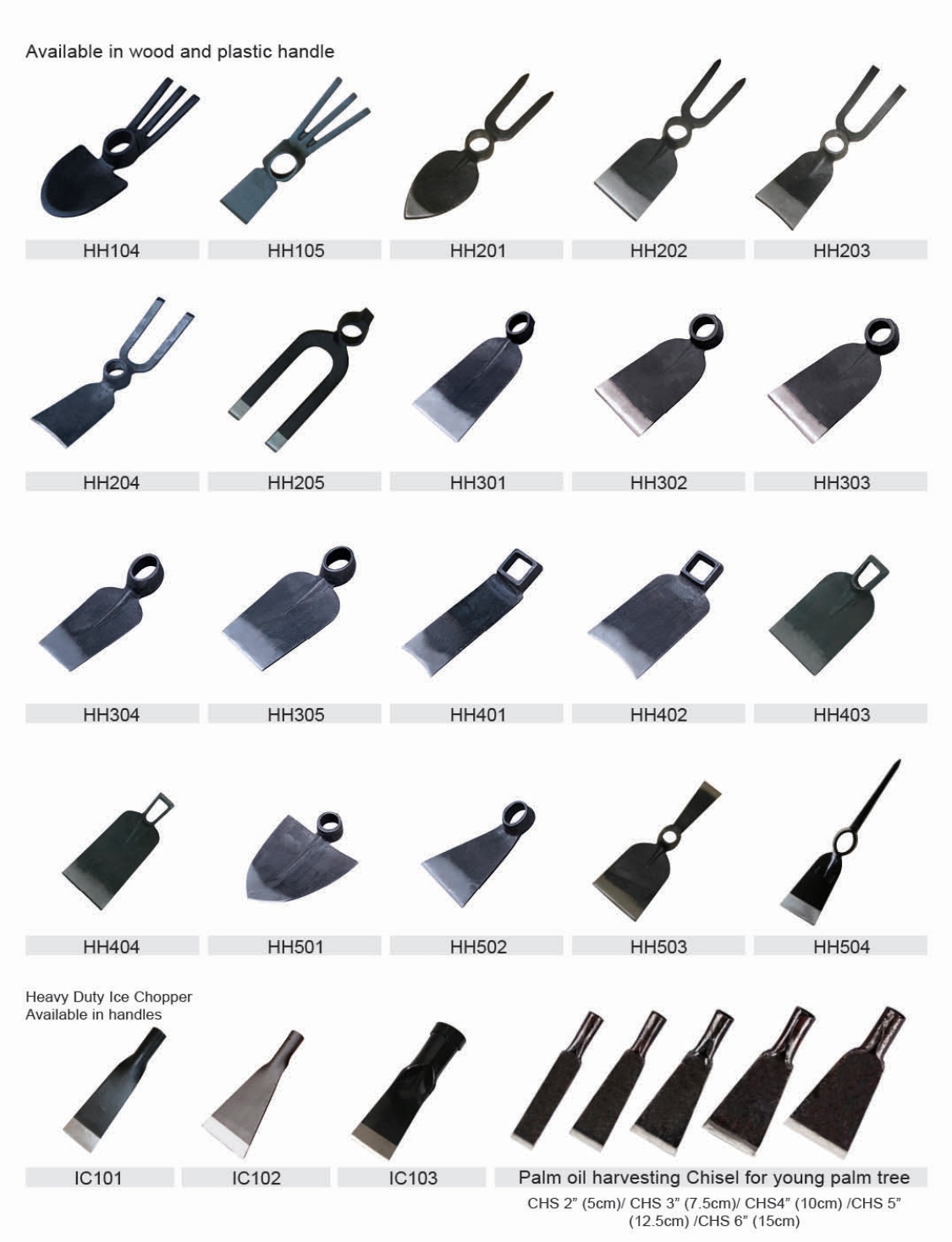News
When it comes to keeping African farmlands weed-free, choosing the right tool can make all the difference. Farmers often face the question: Dutch hoe or stirrup hoe? Each has its strengths and ideal uses. A Dutch hoe excels at cutting weeds just below the soil surface, making it perfect for rows of crops and larger fields. The stirrup hoe, on the other hand, allows quick back-and-forth motion, saving time for light weeding in tighter spaces. Understanding how each tool interacts with soil types, crop arrangements, and daily farming routines is essential. In this guide, I explore the practical differences, advantages, and limitations of both the Dutch hoe and stirrup hoe. By the end, you’ll know which tool fits your specific needs and how to maximize efficiency, reduce labor, and protect your crops. Choosing the right hoe can transform your daily work and help you achieve better harvests with less effort.

1. Why a Dutch Hoe Tool Outperforms Traditional Weeding Methods
The Dutch hoe stands out because it cuts weeds just below the soil surface, preventing regrowth while preserving crop roots. Unlike hand-pulling or simple digging tools, it reduces labor and increases efficiency. Its sharp, angled blade allows farmers to work quickly through rows, saving time and energy. For African farmlands, where manual labor can be intensive and soil conditions vary, the Dutch hoe ensures consistent weeding with minimal strain. Investing in a quality Dutch hoe means fewer weeds, healthier crops, and more productive fields throughout the growing season.
2. Choosing the Best Garden Hoe Dutch for African Farmlands
Selecting the right garden hoe Dutch requires consideration of blade width, handle length, and material durability. A wider blade covers more ground, while a long handle reduces bending, protecting the farmer’s back. Steel blades resist wear and last longer on tough African soils. Understanding the type of crops and soil conditions is also crucial; sandy soils may require lighter hoes, whereas clay-heavy fields need sturdier tools. I explain how to evaluate different models, ensuring the hoe meets both ergonomic and functional needs, ultimately improving efficiency and crop maintenance.
3. Dutch Hoe vs Stirrup Hoe: Which Works Best for Your Crops
Both tools excel in different scenarios. The Dutch hoe slices weeds beneath the soil, ideal for established rows and larger plots. The stirrup hoe allows a push-pull motion, best for light weeding in tighter areas or around delicate crops. Soil type and crop layout determine which tool fits better. For African farmers managing mixed crops or uneven terrains, knowing these differences prevents wasted effort and protects seedlings. I provide practical tips on choosing between the two, so each farmer can match the tool to their farm’s unique conditions and improve overall efficiency.
4. How to Maintain Your Dutch Hoe for Sale for Long-Term Use
Proper maintenance extends the life of a Dutch hoe. Regular cleaning after use removes soil and debris that can cause rust. Sharpening the blade periodically ensures efficient cutting and less physical strain. Store the hoe in a dry, sheltered area to prevent corrosion. Inspect the handle for cracks or splinters to avoid injury. For African farmers who depend on tools daily, a well-maintained Dutch hoe reduces replacement costs and improves performance. I share step-by-step care tips that ensure the tool remains reliable through multiple planting seasons.
5. Key Benefits of Using a Dutch Hoe Tool in Daily Farming
The Dutch hoe boosts productivity by minimizing manual labor and speeding up weeding. It cuts weeds efficiently without disturbing crop roots, promoting healthy growth. Its design allows farmers to cover larger areas quickly, reducing the time spent in the field. Ergonomic handles prevent back strain, which is especially important for long working hours. Using a Dutch hoe also reduces reliance on chemical herbicides, making farming more sustainable and cost-effective. Overall, this tool combines practicality, durability, and efficiency to support better yields for African farmers.

6. Step-by-Step Guide to Buying a Reliable tool Hoe for Sale
When buying a Dutch hoe, evaluate blade material, handle quality, and ergonomic design. Steel blades provide strength, while wooden or reinforced handles offer comfort and durability. Check reviews or recommendations from other farmers to ensure reliability. Consider your farm size and soil type, as different hoes suit different terrains. Price is important, but quality should take priority; a reliable hoe lasts longer and performs better. I outline a practical step-by-step approach, helping farmers make informed purchasing decisions and avoid common mistakes when selecting a Dutch hoe for sale.
7. Garden Hoe Dutch: Tips for Efficient Weeding in African Soil
To maximize efficiency, hold the hoe at the correct angle to slice weeds beneath the soil surface. Work in consistent rows, adjusting blade pressure for soil density. For compact African soils, extra downward force may be needed, while loose soils require gentler strokes. Timing is critical; early weeding prevents weed growth from competing with crops. I also suggest combining the hoe with proper crop spacing and mulching for best results. These techniques allow farmers to maintain weed-free fields quickly and protect crop health throughout the growing season.
8. Dutch Hoe vs Stirrup Hoe: Comparison for African Farmers
African farms vary in size, soil type, and crop arrangement, making tool selection critical. The Dutch hoe excels at larger areas and deeper weed cutting, while the stirrup hoe is lighter and faster for shallow, frequent weeding. Understanding ergonomics, soil resistance, and crop sensitivity helps farmers choose the right implement. I provide a clear comparison of effectiveness, speed, and comfort, giving practical advice to select the best tool for specific farm conditions. Matching the right hoe ensures labor efficiency and reduces damage to valuable crops.
9. Essential Features to Look for in a Dutch Hoe Tool
Durability, blade sharpness, and handle comfort are key features of a good Dutch hoe. High-quality steel blades retain sharpness and resist rust, while long, ergonomic handles minimize bending and fatigue. Adjustable handles can offer flexibility for different farmers and field conditions. Weight balance is crucial; a poorly balanced hoe can increase strain. I guide farmers to identify these features when selecting a tool, ensuring long-term usability, ease of handling, and superior weeding performance. Choosing the right features transforms a simple hoe into a highly effective farming companion.
10. Maximize Harvest with the Right Dutch Hoe for Sale
The right Dutch hoe improves crop yield by efficiently removing weeds, conserving soil structure, and reducing labor time. Proper tool selection and maintenance allow farmers to work longer without fatigue, covering more ground. I emphasize matching the hoe’s size, blade type, and handle to the farm’s soil and crop needs. By investing in a reliable Dutch hoe for sale and using it effectively, African farmers can protect seedlings, reduce competition from weeds, and ultimately maximize harvest output while saving time and effort.

| Product Name | Material | Color | Dimensions (L×W) | Specifications |
|---|---|---|---|---|
| Classic Dutch Hoe | Carbon Steel | Black/Gray | 120 cm × 20 cm | Sharp angled blade, wooden handle |
| Heavy-Duty Dutch Hoe | Stainless Steel | Silver/Gray | 130 cm × 22 cm | Rust-resistant, ergonomic handle |
| Garden Hoe Dutch | High-Carbon Steel | Black/Blue | 115 cm × 18 cm | Lightweight, reinforced handle |
| Professional Dutch Hoe | Forged Steel | Gray/Red | 125 cm × 21 cm | Durable blade, shock-absorbing handle |
| Economy Dutch Hoe | Mild Steel | Black | 110 cm × 19 cm | Affordable, standard wooden handle |

About us:
Dingzhou Gemlight Cutting Tools Co., Ltd.
With over 30 years of manufacturing expertise and 20+ years of export experience to Africa, Southeast Asia, and Latin America,
Gemlight is your trusted partner in agricultural and machete tools.
We specialize in producing high-quality machetes, shovels, hoes, pickaxes, and sickles, with a strong focus on durability and performance.
Factory based in Baoding, Hebei, China, we ensure fast delivery, competitive pricing, and customized OEM/ODM solutions.
Trusted by customers in 50+ countries.
Wholesale inquiries welcome.
E-mail: ganzhedao@gmail.com Whatsapp: +86 139 3323 5088

 Sitemap
Sitemap